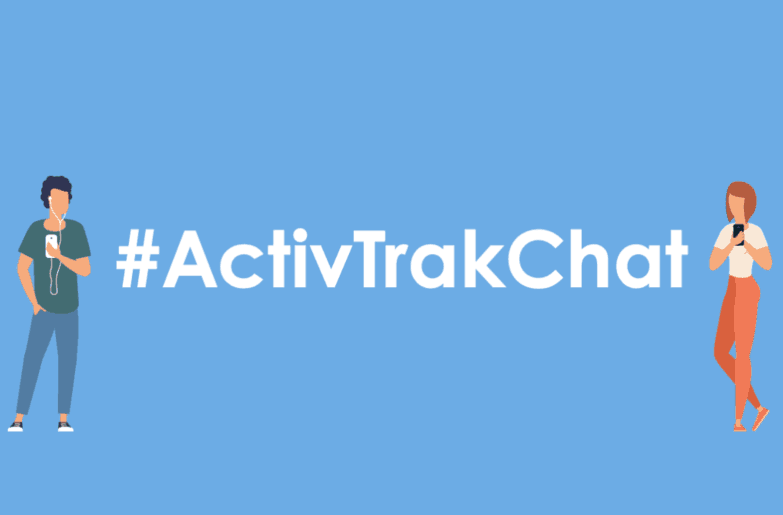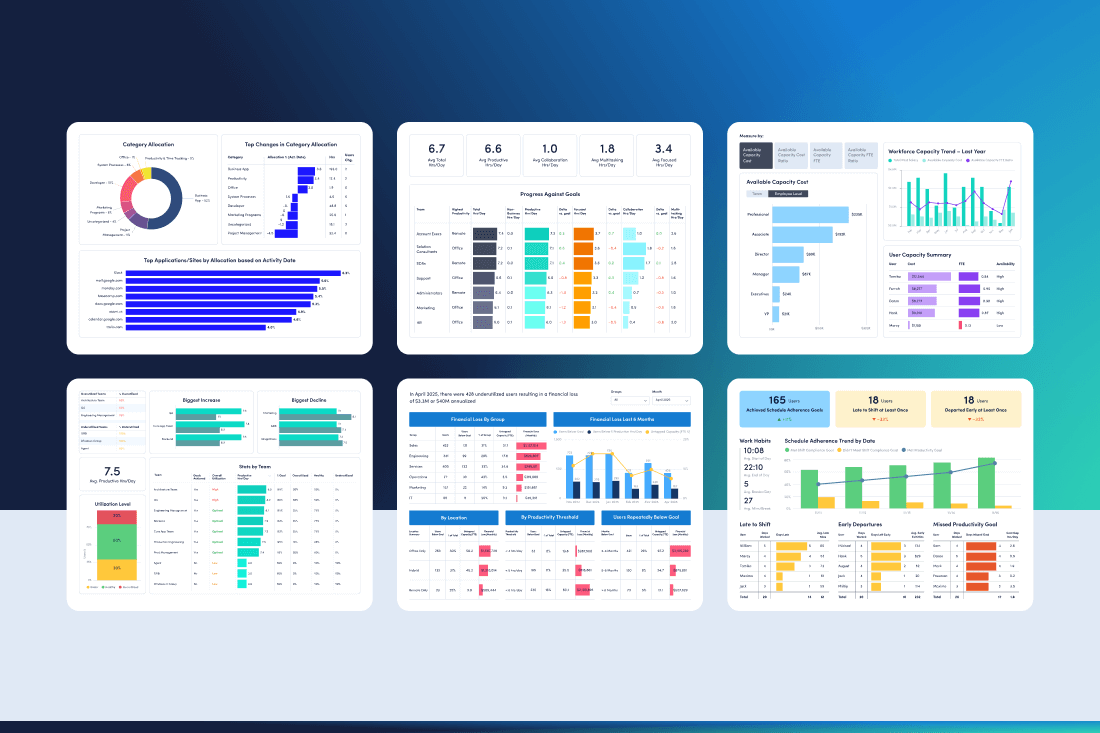In collaboration with remote work industry expert, Forbes Contributor, and Founder of Distribute Consulting, Laurel Farrer, we recently hosted a Tweet Chat to discuss “Remote Management 101: Strategies for Implementing a Work-From-Home Program”.
Numerous remote work industry experts joined the conversation to share ideas and learn what managers can do to help employees and organizations make the transition to working from home easier. We’ve compiled a recap of the questions asked and topics discussed in the Tweet chat, along with a collection of our favorite responses to help you boost the success of your remote workforce. To see the entire Tweet Chat conversation you can visit #ActivTrakChat on Twitter.
Tweet Chat Questions:
- Do you think COVID-19 has changed the perception of remote work? What do you think will happen post-COVID – will organizations continue to support a remote workforce?
- How can managers and leadership best support their teams right now?
- What are your go-to tools for collaboration, live chat, project/task management, remote access, web conferencing, security, productivity monitoring?
- How does productivity monitoring differ from employee monitoring? What are some tips and best practices for monitoring output?
- What should a remote workforce training curriculum include?
- What’s an example of a productivity data point that might help a manager adjust how his/her remote team works?
- What are the long term benefits of employing a remote workforce?
- Do you think remote work is here to stay? What should companies do to prepare?
Question 1
A1. Absolutely. Previously, business leaders were hesitant due to fear of the unknown. But after forced adoption, they now realized it’s more accessible / efficient than they expected. Long-term, we’ll see more companies leverage #remotework as a savings strategy. #ActivTrakChat
— Laurel Farrer (@laurel_farrer) April 9, 2020
#ActivTrakChat Q1: No question it has changed the perception. Many are realizing they CAN be productive, connect and engage from home. Post COVID I do predict more employees will look for #flexibleworking opportunities
— Amy Freshman (@apfreshman) April 9, 2020
#ActivTrakChat A1 Definitely. Prior to COVID-19, 25% of Americans typically worked from home once a week. Now, 90% are home 100% of the time. This is the largest remote work experiment in the history of time. There will be transformational learnings from this experience.
— Justin Endres (@justinendres) April 9, 2020
Question 2
#ActivTrakChat A2: This is a time for leadership to really be transparent if they want their teams to trust them. Managers and executives will benefit a lot by sharing their thoughts and concerns, but also their new strategies asap so that everyone can get behind them.
— Laïla von A. (@lailavona) April 9, 2020
#ActivTrakChat A2: Good communications, quick informal calls and texts to keep employees up to date rather than “in the dark” about what’s going on. Monitoring metrics so employees know their work matters.
— Kate Brew (@securitybrew) April 9, 2020
#ActivTrakChat A2: Managers and leadership need to practice empathy. Giving teams access to tools they need to do their jobs, regardless of geography, is critical. Recognizing that we’re all human, and that some (most?) of us might be under massive stress, is far MORE critical.
— Scott Dawson (@scottpdawson) April 9, 2020
Question 3
#ActivTrakChat A3: There are a plethora of tools available and it increases everyday. It depends on the client I’m working with and what we are trying to accomplish.
— Anne Bibb (@annebibb) April 9, 2020
#ActivTrackChat A3: I currently use @twistappteam for asynchronous comm., @whereby for synchronous, @trello for Project mgt & Gsuite for database mgt and @klaxoon for virtual brainstorming. Looking forward to test @ActiveTrak for productivity.
— Nacho Rodriguez (@IGROCA) April 9, 2020
#ActivTrakChat A3: You’ll hear a lot about async communication and writing everything down, but that’s hard to just suddenly shift to 100%. Consider processes (and then tools) to help people gain shared understanding in written form, but be prepared for this to be challenging.
— Courtney Nash (@courtneynash) April 9, 2020
Question 4
#ActivTrakChat A4: Productivity monitoring is outcome-based, employee monitoring is engagement-based. At @MURAL we use OKRs (Objective Key Results) to set quarterly team goals that align with our yearly company goals and discuss our progress in weekly team meetings.
— Laïla von A. (@lailavona) April 9, 2020
#ActivTrakChat A4 Employee Monitoring can be summarized by those companies asking “ARE my employees working? When did they clock in and out? Productivity Monitoring starts where employee monitoring ends. It normally starts with questions like “HOW are our teams working? 1/3
— Justin Endres (@justinendres) April 9, 2020
#ActivTrakChat A4 Employee Monitoring can be summarized by those companies asking “ARE my employees working? When did they clock in and out? Productivity Monitoring starts where employee monitoring ends. It normally starts with questions like “HOW are our teams working? 1/3
— Justin Endres (@justinendres) April 9, 2020
Question 5
#ActivTrakChat A5: Remote work training will vary by org, but above all it should be written down (and/or recorded via Loom, etc). Have a Handbook, make it available to anyone, anytime. Transparently document how your org/team operates, and keep it constantly updated!
— Courtney Nash (@courtneynash) April 9, 2020
#ActivTrakChat A5: Emphasize soft skills. A lot of skills that you need in-person are the same as what you need remotely, though their importance/impact is amplified. Communication, discipline, and accountability contribute heavily to being an effective remote worker.
— Scott Dawson (@scottpdawson) April 9, 2020
Question 6
A6. True productivity doesn’t always end with a deliverable. Track (and value!) multiple types of work, including types that can’t be viewed on a screen. (Brainstorming, networking, strategy, etc) #ActivTrakChat
— Laurel Farrer (@laurel_farrer) April 9, 2020
#ActivTrackChat A6: I find very interesting keeping track of productivity over time and as a manager being able to visualize how it evolves in the mid-long term. Focusing only on the short term results can lead into team´s overwork and burnout.
— Nacho Rodriguez (@IGROCA) April 9, 2020
Question 7
Statistical data would suggest…a typical employer can save about $11,000/year for every person who works remotely half of the time. Parlay that with increased productivity — organizations may see acceleration that was never thought possible.
— Justin Endres (@justinendres) April 9, 2020
#ActivTrakChat A7 Where to begin… flexibility, talent attraction, talent retention, finding the best talent for the role #locationdiversity employee morale, happiness, reduced stress, not enough characters available in a tweet to capture them all
— Amy Freshman (@apfreshman) April 9, 2020
#ActivTrakChat A7 Having access to a more global pool of candidates, that will also diversify your team. More productive and happier team members. Stronger and healthier team culture is also something I’ve noticed come up in a lot of remote teams due to more intentionality.
— Marcus Wermuth (@mwermuth) April 9, 2020
Question 8
#ActivTrakChat Q8.
— Turing (@turingcom) April 9, 2020
– Choose your tools
– Standardize your onboarding
– Designate mentors
– Conduct ready for remote tests as part of hiring
– Be certain all hires have sufficient time-zone/working hour overlap
A8. Absolutely. It’s here to stay – the only variables will be HOW OFTEN and HOW WELL. #ActivTrakChat
— Laurel Farrer (@laurel_farrer) April 9, 2020
#ActivTrakChat A8. It is absolutely here to stay! When we’ve asked remote workers if they wanting to continue to work remotely for the rest of their career, 98% of them said yes.
— Hailley Griffis (@hailleymari) April 9, 2020
Source: https://buffer.com/state-of-remote-work/2020
Thank you again to everyone who participated in the dialogue! For additional free resources on improving remote workforce productivity and effectiveness, check out our Remote Workforce Resource Center. Also, be sure to keep an eye out for future ActivTrak Tweet Chats with industry experts and reach out to us @ActivTrak with the topics you’d like to see discussed.
Follow us on Twitter and our other social networks to keep a pulse on what else ActivTrak is doing.





